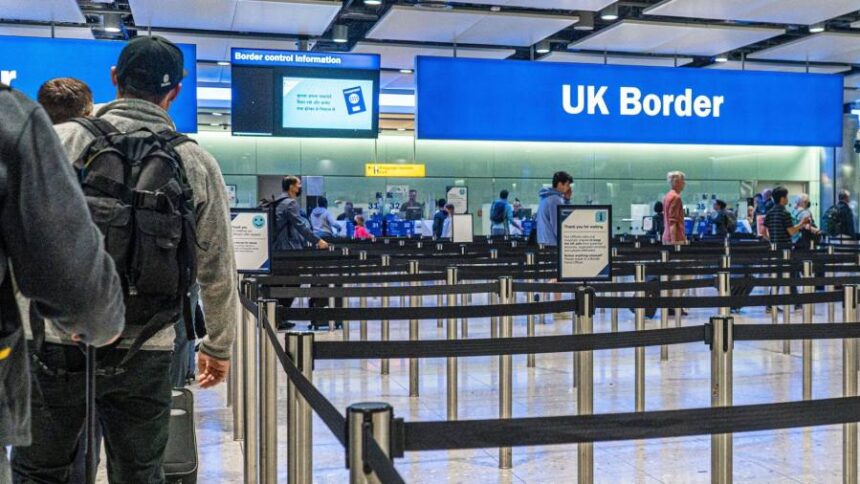Receive free UK immigration updates
We’ll send you a myFT Daily Digest email rounding up the latest UK immigration news every morning.
A record number of foreign nationals entered the UK in the year to the end of June for work or study, with the majority from non-EU states, according to official data released on Thursday.
Figures published by the Department for Work and Pensions showed the number of adults from overseas registering for a national insurance number surged by a quarter during the 12-month period to 1.1mn, up from 880,000 last time, and the highest since records began in 2002.
The surge in successful applications reflects the sharp rise in work-based and student visas, which contributed to record net migration to the UK of 606,000 in 2022, despite promises by consecutive Conservative prime ministers to bring net migration down. All overseas nationals who want to work or study in the UK must obtain a national insurance number.
EU nationals accounted for just 130,000 registrations, with the other 960,000 coming from the rest of the world, reversing a trend stretching back over almost 20 years as Brexit ended the free movement for citizens from the bloc.
The publication of the national insurance data coincided with the release of Home Office migration statistics that underscored the challenge facing Prime Minister Rishi Sunak in tackling the ballooning backlog in the processing of asylum claims and delivering on his promise to halt small boat crossings.
At the end of June 2023, there were 134,046 asylum cases (relating to 175,457 people) awaiting an initial decision, up 35 per cent on the same period a year earlier.
The figures also showed that less than half (40,386) of the 97,390 new asylum claims in the 12 months came from people entering the UK on small boats.
Peter Walsh, senior researcher at the Oxford Migration Observatory think- tank, said that figure raised questions about the government’s obsessive focus on the issue of small boat crossings. “Political debate has been hyper-focused on small boats, 90 per cent of whom claim asylum. Yet in the year to June 2023, small boat arrivals made up only 41 per cent of asylum claims.”
The Home Office said the majority of asylum applications were from people arriving in the country on a temporary visa, through other irregular routes, including in lorries or shipping containers, or after entering the country with fraudulent documents.
The data also raised questions about the government’s ability to remove people quickly from the country after deeming them inadmissible for asylum — one of the purposes behind the Illegal Migration Act passed in parliament last month. The act bars anyone who arrives in the country without prior permission from claiming asylum and puts a legal onus on the home secretary to detain and deport them.
Between January 1 2021, when updated inadmissibility rules came into effect following the UK’s departure from the EU, and June 30 this year, 60,595 asylum claimants were identified for consideration on inadmissibility grounds.
Of these, 29,258 were issued with “notices of intent”, informing them that they were being considered for removal, but only 23 ended up being subject to enforced removals on inadmissibility grounds.
While removals overall rose 29 per cent to 4,193 in the year ending March 2023, the majority (72 per cent) were foreign national offenders. About half of the total were EU nationals.
The opposition Labour party said that at current rates of removal it would take the government “until 2036” to deport all failed asylum seekers on the list — not including those arriving since June 2022.








